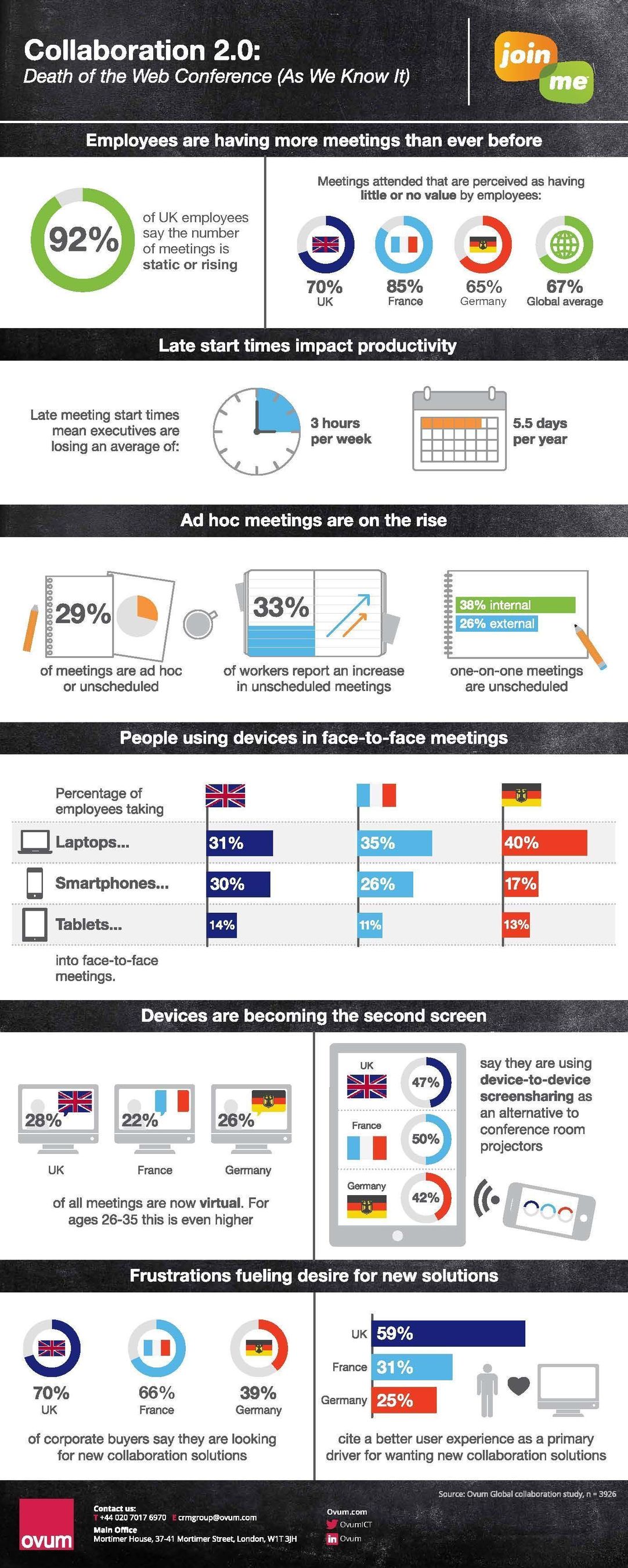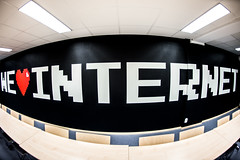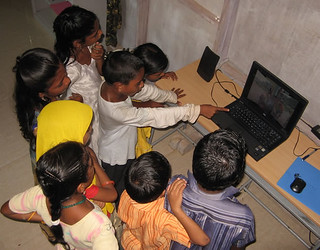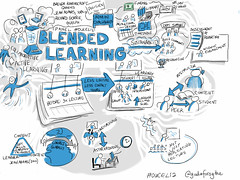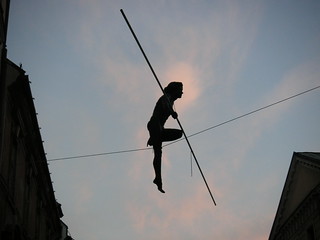Barriers are often thrown in place when eLearning is mentioned. Access, cost of owning a device, safety...the list goes on. However, when solutions are sought to issues, rather than accepting what may appear to be the insurmountable status quo, learners can take things way further than educators may imagine.
Sugata Mitra (whose video is included at the end of this post) is one such person. Sugata addressed a wide range of issues to put in place an initiative that had many nay-sayers. The ‘Hole-in-the-wall’ initiative is now widely known, as are the results. By addressing issues that were pretty much insurmountable for the local children, Sugata empowered young learners to figure out the technology by themselves, and in turn opened up a world of learning to them. These learners were able to creatively select, evaluate, internalise and externalise the information they found online and own it as ‘knowledge’.
Learners teaching learners
Since the first initiative Sugata’s vision has emerged as a global one where he calls for the development of cloud based schools (see video below) and a Self-Organized Learning Environments (SOLE). (You can
find out more about SOLE and download a toolkit at the TED site.) What is more, Sugata has, through social networking and the ubiquitous nature of the Internet, inspired learners and educators around the world.
What this can look like in a school facing ‘barriers’
One such example; I was inspired by a story shared by
Helen Martin toward the end of last year:
How a Radical New Teaching Method Could Unleash a Generation of Geniuses. I had read it before and it had stayed in my mind, so re-reading it was a reminder as to why it had been so powerful the first time around. Imagine you are a student or educator at the following school:
The school serves residents of Matamoros, a dusty, sunbaked city of 489,000 that is a flash point in the war on drugs. There are regular shoot-outs, and it’s not uncommon for locals to find bodies scattered in the street in the morning. To get to the school, students walk along a white dirt road that parallels a fetid canal….Some people here call the school
un lugar de castigo—“a place of punishment.” (
source)
And then consider whether you might have moved from teaching “the government-mandated curriculum” that you feel is a “a waste of time”, to start researching and trialling different approaches that could empower and engage your students. Sergio Juárez Correa was one such teacher. Inspired by a video describing the work of Sugata Mitra. One of the first things Sergio did was group the desks and sit down to learn with the students - he also set the expectation with his students that they had potential, and that they could rise to this potential.
For the study of maths Sergio Juárez “began experimenting with different ways of posing open-ended questions on subjects ranging from the volume of cubes to multiplying fractions”. The resulting collaborative learning was “noisy, [and] slightly chaotic….the opposite of the sort of factory-friendly discipline that teachers were expected to impose. But within…[a short time], they had come up with the answer” (
source).
The next step was to implement Sugata’s suggestion that children learn most effectively when they have access to the Web - not an easy task in the environment Sergio and his students worked in. Unfortunately, there was no resource for the school to access to the Internet directly. “As a result, Juárez Correa became a slow-motion conduit to the Internet. When the kids wanted to know why we see only one side of the moon, for example, he went home, Googled it, and brought back an explanation the next day” (
source).
The results?
“The previous year, 45 percent had essentially failed the math section, and 31 percent had failed Spanish. This time only 7 percent failed math and 3.5 percent failed Spanish. And while none had posted an Excellent score before, 63 percent were now in that category in math” (
source). Also incredibly exciting was the fact that one of the students, Paloma, achieved “the highest math score in the country, but the other students weren’t far behind. Ten got math scores that placed them in the 99.99th percentile. Three of them placed at the same high level in Spanish” (
source).
Interestingly, it is reported that Juárez Correa, while pleased that his students had done well, had mixed feelings about the fact that the students “had distinguished themselves because of a conventional multiple-choice test”, indicating that the exams limit the teachers and “test what you know, not what you can do, and I am more interested in what my students can do” (
source).
By shifting the approach he was using for teaching to one that was focused on group work, creativity, and a student-led environment, his students thrived and grew, and that was what interested him. Not their achievement in standardised tests.
Sadly, nothing has changed in the way of support or funding. Francisco Sánchez Salazar, chief of the Regional Center of Educational Development in Matamoros, is quoted as saying that “Intelligence comes from necessity” and that the students “succeed without having resources” (
source).
Take aways?
This is a post that has been a long time in the writing, and I think, in part, it’s because I was trying to make sense of what the key take aways are - without being reductionist. There seem to be several things at play here:
- Students can learn even when faced with issues such as lack of resources and funding
- Regardless of location and education background, given time and access to basic resources, many students will grasp any possible opportunity that comes their way to learn...they are curious, applied and filled with wonderings. Often, these students will help each other to learn.
- Many students learn well when encouraged to be creative, collaborative, and to take ‘ownership’ of the learning
- Teachers who are global in their outlook, and self-directed in their own professional development and inquiry, can make major shifts in their own practice if they are open to changing their role and beliefs about how people learn
- National standardised testing appears to be something that restricts, and possibly even negates, 1 to 4 in the list above.
I wonder then, when there will be fundamental shifts in the way we test whether the education system is working - given that it appears that the testing itself is possibly undermining the system.
Images
- International student. CC licensed Flickr image by Penn State: http://www.flickr.com/photos/53130103@N05/4947783158
- Veda Pathashala students learning. CC licensed Wikimedia image by Rhariram: http://commons.wikimedia.org/wiki/File:Veda_Pathashala_students_learning.jpg
- Come with Us/The Test. CC licensed Wikipedia image by Chemicalfire 07: http://en.wikipedia.org/wiki/File:Come_with_us_the_test.jpg
- Students; captivated by a movie of themselves. CC licensed Flickr image by eltpics: https://www.flickr.com/photos/54942754@N02/6711545545



